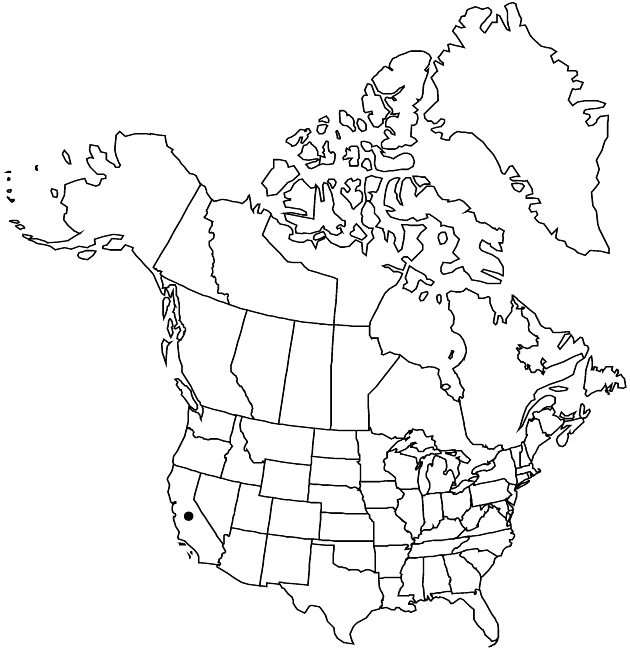Hulsea vestita subsp. callicarpha
Aliso 7: 413. 1972.
Common names: Beautiful hulsea
Endemic
Basionym: Hulsea vestita var. callicarpha H. M. Hall Univ. Calif. Publ. Bot. 1: 129. 1902
Synonyms: Hulsea callicarpha
Treatment appears in FNA Volume 21. Treatment on page 399.
Plants 40–100 cm. Leaves: proximal blades 3–8 cm, margins entire or undulate (sometimes weakly lobed near apices), faces densely lanate to woolly; cauline leaves (on proximal 1/4 of stems) lance-oblong to ovate (1.5–3 cm). Heads 1–3. Involucres obconic, 10–15 mm diam. Phyllaries 8–12 mm, outer narrowly obovate to lanceolate, apices acuminate. Ray-florets 16–25; laminae yellow, sometimes red-tinged distally, 8–10 mm. Disc corollas yellow. Cypselae 5–7 mm; pappus-scales subequal, 1.5–2 mm. 2n = 38.
Phenology: Flowering late spring–summer.
Habitat: Rocky slopes, talus, and flats, conifer forests, sometimes chaparral, on granitic and metamorphic substrates
Elevation: 1300–2500 m
Discussion
Subspecies callicarpha grows in the Palomar, San Jacinto, and Santa Rosa mountains.
Selected References
None.
Lower Taxa
None.
... more about "Hulsea vestita subsp. callicarpha"
introrse +
connate +
herbaceous +
acuminate +
scarious +
absent +
hirsute +
papillate +
corymbiform +
continuous +
decurrent +
spatulate +
winged;ribbed;winged;ribbed +
1;15 +
stigmatic +
6;80 +
absent +
Beautiful hulsea +
glabrous +
zygomorphic +
monomorphic +
dimorphic +
silky-hairy +
5mm;7mm +
staminate +
reduced +
Calif. +
straight +
scabrellous +
distinct +
proximal +
1;5 +
bisexual +
dispersed +
singly +
Rocky slopes, talus, and flats, conifer forests, sometimes chaparral, on granitic and metamorphic substrates +
discoid +
indeterminate +
1;3 +
surrounding +
obconic +
basal +
2-carpellate +
inferior +
attached +
anatropous +
subequal +
persistent +
fragile +
falling +
equal +
tough +
thick +
absent +
connate +
persistent +
distinct +
falling +
unequal +
Aliso +
1972 +
pistillate +
absent +
fertile +
epaleate +
pitted +
knobby +
fibrous +
distinct +
laciniate +
exalbuminous +
modifed +
2;4 +
Endemic +
alternate +
erect +
2-branched +
papillate +
Hulsea vestita subsp. callicarpha +
Hulsea vestita +
subspecies +
cylindric +
equaling +
shorter +
longer +
perennial +
